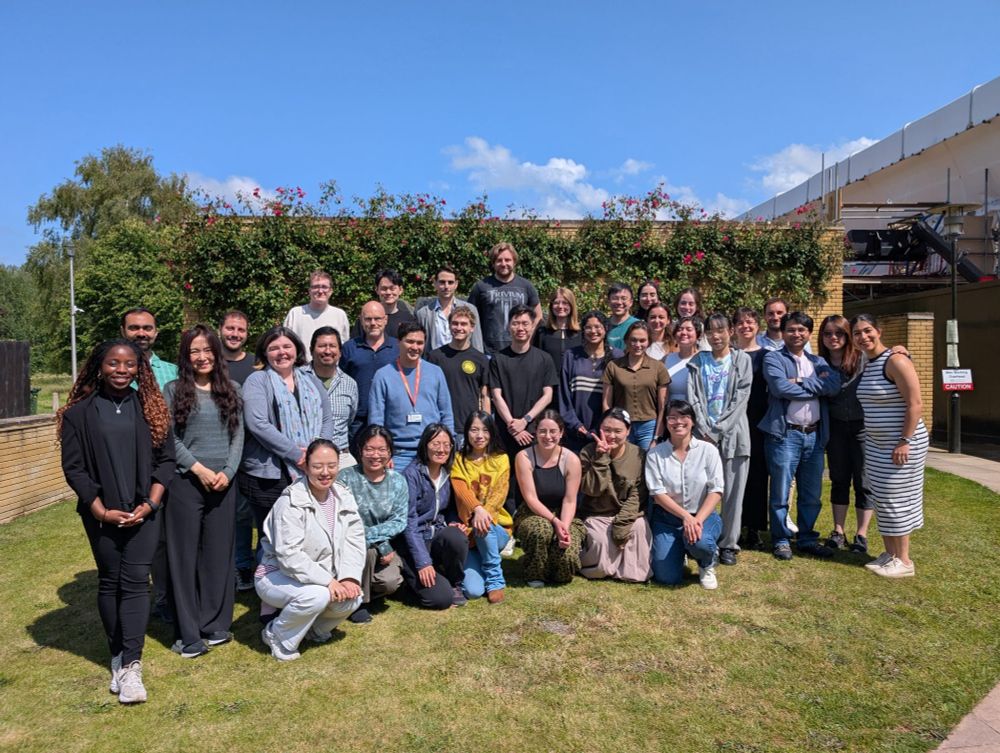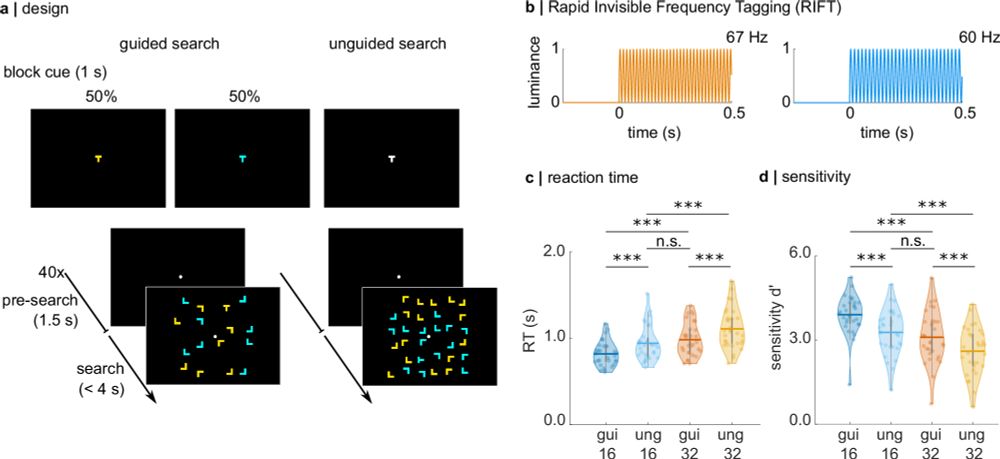
BIOMAG 2025,在线会议,会议直播平台,网络会议直播,美迪康会务通,学术会议管理系统,会议活动管理,注册签到管理,会场幻灯片传输转播,PPT传输,会议网络直播,电子壁报管理系统,医学会,会员管理系统
Exciting news from the chairs of Biomag 2026, Prof. Jiahong Gao and Prof. Huan Luo — the conference website is now live: biomag2026.scimeeting.cn The meetings take place in Beijing, 23–25 August 2026. Save the date and start thinking about ideas for posters and symposia! Please share with colleagues
11.11.2025 17:28 — 👍 9 🔁 6 💬 0 📌 1

Hierarchical dynamic coding coordinates speech comprehension in the human brain | PNAS
Speech comprehension involves transforming an acoustic waveform into meaning. To do
so, the human brain generates a hierarchy of features that conv...
CogNeuroLanguage: new by @lauragwilliams.bsky.social & @jeanremiking.bsky.social (w Alec Marantz & me) shows how the brain maintains-updates continuously unfolding lang hierarchy during comprehension, anchoring ling theories to biological implementation
www.pnas.org/doi/10.1073/... #neuroskyence
18.10.2025 13:36 — 👍 74 🔁 17 💬 1 📌 1
Our new study - pseudoneglect is partly explained by structural hemispheric asymmetries in putamen 👇👇👇
19.09.2025 14:35 — 👍 14 🔁 1 💬 1 📌 0

Confronting the connectivity crisis in human M/EEG research
The cognitive neuroscience community using M/EEG has not converged on measures of task-related inter-regional brain connectivity that generalize acros…
In our Trends in Cogn Sci paper we point to the connectivity crisis in task-based human EEG/MEG research: many connectivity metrics, too little replication. Time for community-wide benchmarking to build robust, generalisable measures across labs & tasks. www.sciencedirect.com/science/arti...
18.09.2025 15:23 — 👍 87 🔁 28 💬 2 📌 0
Important findings from @katduecker.bsky.social : faster visual search for a target among distractors predicted by stronger alpha; ie a case where alpha benefits visual processing
01.09.2025 05:52 — 👍 8 🔁 0 💬 0 📌 0
🚨We believe this is a major step forward in how we study hippocampus function in healthy humans.
Using novel behavioral tasks, fMRI, RL & RNN modeling, and transcranial ultrasound stimulation (TUS), we demonstrate the causal role of hippocampus in relational structure learning.
28.08.2025 14:00 — 👍 129 🔁 47 💬 2 📌 6
Join our team! We're looking for a Research Assistant to support OPM-MEG research on reading in children and adults at the Oxford Centre for Human Activity in the Neuronal Oscillations group (www.neuosc.com). Deadline 22nd July. For details see lnkd.in/e2qvCP9b
26.06.2025 13:52 — 👍 7 🔁 4 💬 1 📌 0

Day 2 of the OPM-FLUX (www.neuosc.com/fluxtoolkit2...) toolkit at University of Oxford hosted at St Catz. We have 32 bright participants from 7 countries learning how to apply OPM-MEG in cognitive and clinical neuroscience
10.06.2025 09:24 — 👍 17 🔁 1 💬 1 📌 0
During saccades, visual objects are first processed in the parafovea, then in the fovea upon fixation. Does this repeated exposure cause repetition suppression or information accumulation? MEG work by Syanah Wynn suggests both as a consequence of neural sharpening.
www.biorxiv.org/content/10.1...
27.05.2025 11:06 — 👍 12 🔁 1 💬 0 📌 0
Language and Computation in Neural Systems
We are an international group of scientists consisting of linguists, cognitive scientists, cognitive neuroscientists, computational neuroscientists, computational modellers, computational scientists, ...
my lab (lacns.github.io) at @mpi-nl.bsky.social and @dondersinst.bsky.social is recruiting for two PhD and two postdoctoral positions funded by an @erc.europa.eu Consolidator - come join us!
PhD: www.mpi.nl/career-educa...
Postdoc: www.mpi.nl/career-educa...
(please share widely)
20.05.2025 13:49 — 👍 81 🔁 53 💬 3 📌 9

UCL – University College London
UCL is consistently ranked as one of the top ten universities in the world (QS World University Rankings 2010-2022) and is No.2 in the UK for research power (Research Excellence Framework 2021).
📣cog neuro postdoc opportunity! Interested in studying attention & exploration w/ cutting edge M/EEG? 🧠care about making vision science a bit more naturalistic? 🌱LandauLab is hiring! We seek resourceful, curious and creative researchers who can join the newly forming London-based team@ucl.ac.uk! ...
15.05.2025 16:07 — 👍 23 🔁 17 💬 2 📌 3
Hands-on training at University of Oxford using OPM in cognitive and clinical neuroscience. Deadline 23/05/2025
15.05.2025 17:09 — 👍 1 🔁 1 💬 0 📌 0
Oscar Ferrante from @thechbh.bsky.social and his colleagues Rony Hirschhorn and Alex Lepauvre on Brain Inspired, reflecting on the Cogitate collaboration and the recent Nature paper.
08.05.2025 12:22 — 👍 5 🔁 2 💬 0 📌 0
And a wonderful podcast on Brain Inspired by the excellent postdocs/PhDs from the COGITATE team (@arc-cogitate.bsky.social) reflecting on their experience of being part of the adversarial collaboration on consciousness
braininspired.co/podcast/211/
08.05.2025 12:18 — 👍 2 🔁 1 💬 0 📌 0
MEG-UKI 2025 | UCL London | 16–18 July – MEG UKI
The 2025 edition of MEG UKI will be hosted by UCL 16-18th July. This year we include a multimodal day on naturalistic neuroscience! Abstract submission is also now open. meguk.ac.uk/meg-uki-2025/
28.04.2025 12:56 — 👍 14 🔁 10 💬 2 📌 1
rt_neurocomp - réseau français de neurosciences computationnelles - subscribe
Researchers in France are working on creating a french network of researchers to organize interaction, communication and training in #Computational_Neuroscience. If you are a CompNeuro working in France, consider joining, and registering to our mailing list: listes.services.cnrs.fr/wws/subscrib...
02.05.2025 12:03 — 👍 23 🔁 15 💬 2 📌 1
Our @nature.com paper is out! Bringing together 2 major theories of consciousness - Integrated Information Theory (IIT) and Global Neuronal Workspace Theory (GNWT) - in an unprecedented collaboration. Here’s the story of how we advanced theory testing in neuroscience
www.nature.com/articles/s41...
30.04.2025 15:34 — 👍 44 🔁 25 💬 1 📌 5
I'm so happy for the friends I made working on this project, and proud of the work we have put together
30.04.2025 15:41 — 👍 9 🔁 2 💬 0 📌 0
I lost count of how many times I said, “I’ll believe it when I see it", and here we are. It's been a privilege to be part of @arc-cogitate.bsky.social and to learn from such brilliant people (especially grateful to @liadmudrik.bsky.social for the opportunity to join this massive project)
30.04.2025 16:27 — 👍 8 🔁 2 💬 1 📌 0

Adversarial testing of global neuronal workspace and integrated information theories of consciousness - Nature
Multimodal results (iEEG, fMRI and MEG) of predictions from integrated information theory and global neuronal workspace theory align with some predictions of both theories on visual consciou...
The 1st major study from @arc-cogitate.bsky.social
is out today in @nature.com—a landmark collaboration testing theories of consciousness through rigorous, preregistered science. Data & tools shared openly.
Contributed from @mcgillumedia.bsky.social @theneuro.bsky.social
nature.com/articles/s41...
30.04.2025 15:12 — 👍 34 🔁 14 💬 0 📌 1

Inside the Big Bet on Consciousness
The real winner in the battle between two leading theories of consciousness was science itself
We’re grateful for the ongoing support from @anilkseth - in particular for his generous and nuanced recent article in @nautil.us :
“Inside the Big Bet on Consciousness”
nautil.us/inside-the-b...
01.05.2025 15:27 — 👍 3 🔁 1 💬 0 📌 0

"This adversarial collaboration has not only provided crucial understanding of how consciousness emerges in the brain but has also revealed a novel and powerful methodology for conducting science, one that we will undoubtedly incorporate into our future MEG investigations on cognitive and clinical neuroscience." Professor Ole Jensen, Chair of Translation Cognitive Neuroscience
What is consciousness? A global team of researchers, including Chair of Translation Cognitive Neuroscience Professor Ole Jensen, put two top theories to the test. Find out how they fared: buff.ly/5IU1BH0
02.05.2025 11:02 — 👍 8 🔁 3 💬 1 📌 0
Illuminating math and science. Supported by the Simons Foundation. 2022 Pulitzer Prize in Explanatory Reporting. www.quantamagazine.org
Psych postdoc at the University of Birmingham CHBH. Research interests: cognitive control, metacognition, eyewitness memory, decision making & child development. Views are my own.
assoc prof, uc irvine cogsci & LPS: perception+metacognition+subjective experience, fMRI+models+AI
phil sci, education for all
2026: UCI-->UCL!
prez+co-founder, neuromatch.io
fellow, CIFAR brain mind consciousness
meganakpeters.org
she/her💖💜💙views mine
Professor of Sensorimotor Neuroscience, Radboud University Nijmegen, Donders Institute for Brain, Cognition and Behaviour
Professor in Brain & Cognition, KU Leuven, Belgium - The brain rules the mind; would-be runner and musician.
Official Bluesky account of The Kavli Foundation.
Advancing science for the benefit of humanity.🔬
kavlifoundation.org
Supporting research to transform life, health and wellbeing. We’re taking on three urgent health challenges: mental health, climate change & infectious disease.
Computational Neuroscience research group led by Walter Senn
@unibern.bsky.social
CompNeuro website: https://physiologie.unibe.ch/~senn/group/
Working Memory, Cognition and Development lab 👩🏼💻🧠 at the University of Geneva 🇨🇭
PI: @evievergauwe.bsky.social
Postdoctoral researcher at the Scene Grammar Lab studying attention, working memory, and temporal expectations
Research Fellow @CHBH (University of Birmingham). Eager to learn more about the brain! Especially working memory, attention and multitasking
Neuroscientist, PI of the Dynamics of Cognition Lab at University of Rochester
we study oscillatory brain dynamics
@columbiauniversity.bsky.social
PI: saskia haegens
Cognitive neuroscientist at Northwestern U investigating memory, sleep, consciousness, other stuff
http://kenpaller.com
Computational & Systems Neuroscience (COSYNE) Conference
🧠🧠🧠
Next: Mar 27-April 1 2025, Montreal/Tremblant
🧠🧠🧠
Here too:
@CosyneMeeting@neuromatch.social
@CosyneMeeting on Twitter
Neuroscientist interested in building blocks of adaptive behaviour
Assistant Professor-www.birmingham.ac.uk
Academic in the Melbourne School of Psychological Sciences, University of Melbourne, Australia.















